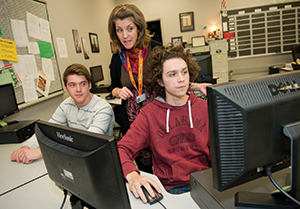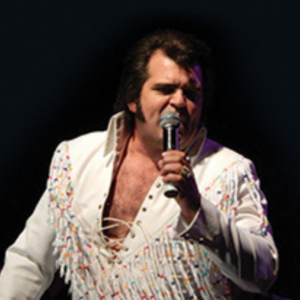Hour of Code
How much difference can an hour make? People such as Mark Zuckerberg, Bill Gates and President Obama recognize that one hour spent learning about computer programming can make all the difference in the world.
Hour of Code was developed by the nonprofit organization code.org to expose students to computer programming through fun, relatable and engaging tutorials and activities during the annual week of Computer Science in December. The event lasts a week, but the goal is to connect to individuals for at least an hour.
 Susan James, Computer Science teacher at Edmond Santa Fe High School, was one of the teachers who participated in the Hour of Code project. Prior to the event, James worked with school principal Jason Hayes to submit an event plan—which earned them a $10,000 grant. “I was able to secure dual monitors and adaptors for each workstation, an interactive Smartboard, as well as other technology to enhance the classroom,” says James.
Susan James, Computer Science teacher at Edmond Santa Fe High School, was one of the teachers who participated in the Hour of Code project. Prior to the event, James worked with school principal Jason Hayes to submit an event plan—which earned them a $10,000 grant. “I was able to secure dual monitors and adaptors for each workstation, an interactive Smartboard, as well as other technology to enhance the classroom,” says James.
According to the code.org website, the gap between exposure to computer science and jobs requiring knowledge of computer science in the United States is growing—so much so that by the year 2020, there will be one million more computer-related jobs than qualified applicants to fill them. Currently, less than three percent of college students graduate with a degree in computer science—a number that has dropped over the past ten years—in part because many universities don’t offer computer programming classes.
In some countries, such as China, computer programming is as common as math and reading, while in the United States, less than five percent of students learn the skill. “I have come to feel even more strongly that computer science needs to be available in every school across the United States. Computers are everywhere and technology affects everything around us,” says James. “It’s crucial that we help our students understand how that technology works. A lack of understanding will put our students at a disadvantage as they move into their lives beyond high school.”
“Overall, my impression of the program was that it was helpful,” says Lucas Johns, a senior at Edmond Santa Fe. Johns has some experience in coding but asserts that it “would have been nice to have access to those materials and games when I was first learning about coding.” Much of what Johns participated in during the Hour of Code project served to reinforce concepts previously learned. He was also surprised at the support the project received from the president and industry leaders.
 “The Hour of Code program was both entertaining and informative,” says Kelvin Leu, also a senior at Edmond Santa Fe. “The participants who did not have prior experience were able to easily interact with the tools provided, which encouraged them to learn more and bring their friends.” Leu also noticed “those who attended a session saw connections to the real world and returned to subsequent sessions.”
“The Hour of Code program was both entertaining and informative,” says Kelvin Leu, also a senior at Edmond Santa Fe. “The participants who did not have prior experience were able to easily interact with the tools provided, which encouraged them to learn more and bring their friends.” Leu also noticed “those who attended a session saw connections to the real world and returned to subsequent sessions.”
This year’s event was a success and will be held each year—and the code.org website along with csedweek.org website are still active and going strong. Many of the tutorials and activities made available to educators during the Hour of Code project are still online. “The number of people participating in learning about computer programming continues to rise,” says James.
“The original goal of code.org was to expose one million students worldwide to an Hour of Code,” says James. “By the end of the week, more than thirteen million students had participated.”




